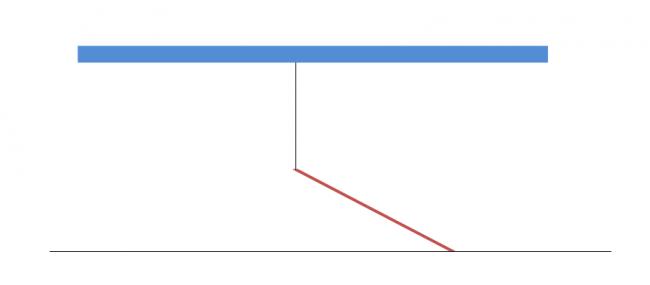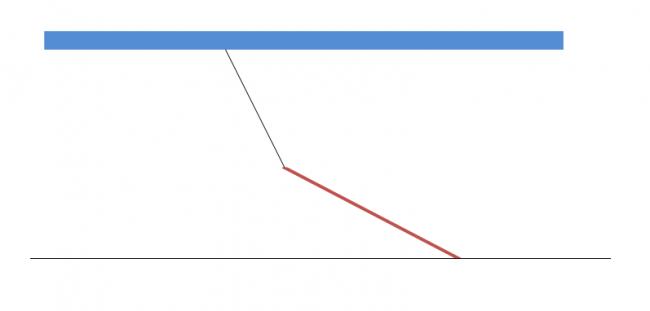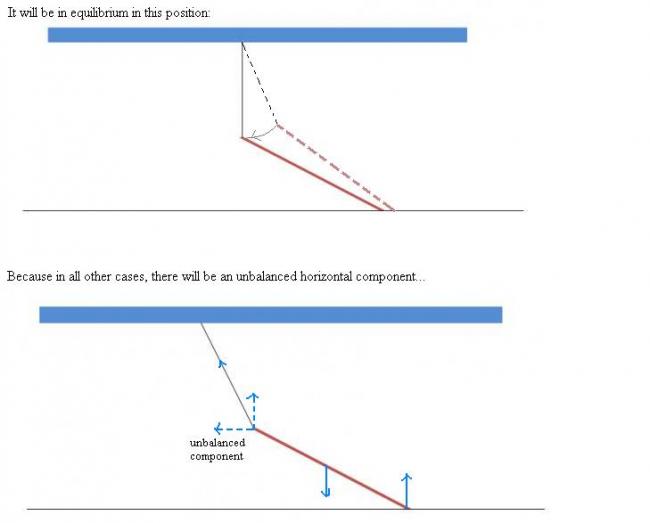force on COM in x direction is absent ....so x- coordinate of COM shud remain where it is .........

A rod (red) is just release from the position shown here..
Where will the rod finally rest? (to the right, to the left) Why?
Clarifications: No friction..
Red part is the rod
Vertical Black line is a string
Blue top is wall/ roof/ ceiling
and black line below is the ground :P
String in inelastic..
The rod is free to move..
-
UP 0 DOWN 0 1 15

15 Answers
i didnt get 1 thing ....released frm rest means release it as it is or cut the string ???
if it is the former ....then COM has accn towards left
no it is just left.. the string is not cut...
The acceleration is towards the left.. but where will this string the tendency to stay after a very very long time....
(assuming that it loses energy veyr slowly)
according to me, the string would be on a point on the circumference of a circle through which the torque due to strig is balanced by the torque of the string...
the circle is on d grnd..
through every point of which the torque due to ground(normal) is balanced by the torque due to the string...
but then where will that point finally be?
You mean to say that it will keep rotating in a circle/???
The rod will not move at all. The position drawn in the q. is at its equilibrium position
I may be wrong........
@virang nishant sir didn said that in the given position the rod is in equilibrium.
initially it will be oscillatory..
but it is losing energy very slowly.. (read the question)
So finally it will come to rest..
The question is where!

